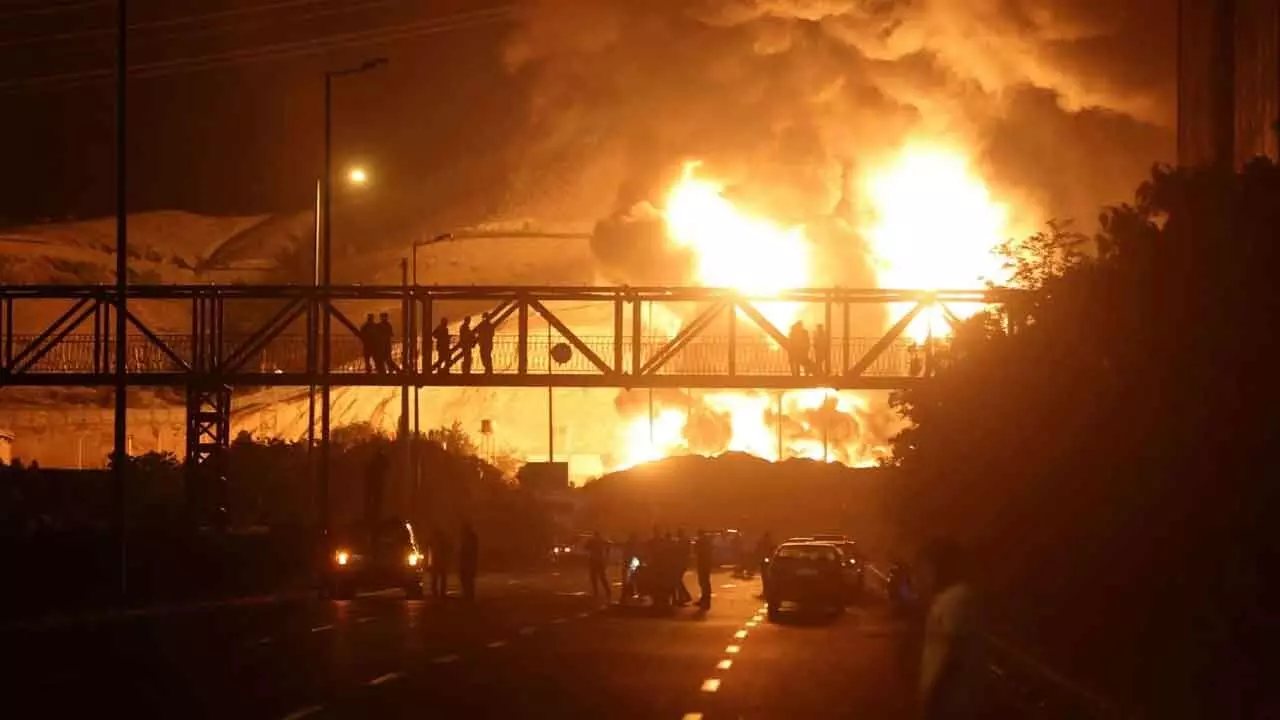Global Markets Tremble as US Strikes on Iran Ignite Middle East Crisis, Fueling Oil Price Surge
Global markets plunge as US strikes on Iranian nuclear sites escalate Middle East tensions, driving oil prices higher and sparking widespread investor concern across Asia-Pacific and beyond. Get the latest on market reactions and oil price surges.
Global Markets Tremble as US Strikes on Iran Ignite Middle East Crisis, Fueling Oil Price Surge

A palpable sense of unease swept across Asia-Pacific financial markets Monday, as news broke of targeted U.S. strikes on three nuclear sites within Iran. This audacious move by the United States has sent immediate shockwaves through the global economy, reigniting fears of a broader conflict in the volatile Middle East and triggering a significant spike in oil prices, already a point of contention for investors worldwide.
The reverberations were felt keenly from Tokyo to Sydney, as stock indices across the region registered notable declines throughout early trading. Investors, already navigating a complex landscape of persistent inflation concerns and the Federal Reserve's closely watched interest rate decisions, are now grappling with an intensified geopolitical risk that threatens to disrupt global supply chains and economic stability.
Crude oil, the lifeblood of the global economy, reacted swiftly and dramatically to the escalating tensions. Brent Crude, the international benchmark, surged by over 2% to trade around $78.66 per barrel as of late morning Singapore time, while its American counterpart, West Texas Intermediate (WTI) crude, also climbed by a similar margin, hovering around $75.47. This upward trajectory in oil prices is a direct reflection of heightened anxieties over potential disruptions to vital energy supply routes in the Middle East, particularly the Strait of Hormuz, a critical chokepoint for a significant portion of the world's oil shipments. Analysts are now closely watching for any retaliatory moves from Iran, with some suggesting that further escalation could push oil well into the $80-$90 range, or even higher if the Strait of Hormuz is threatened.
Across Asian bourses, the mood was decidedly bearish. Japan’s benchmark Nikkei 225 saw a dip of 0.56%, mirrored by a 0.49% decline in the broader Topix index. In South Korea, the Kospi index shed 1.05%, with the technology-heavy small-cap Kosdaq experiencing an even sharper plunge of 1.78%. Hong Kong’s Hang Seng Index moved lower by 0.58% in early trade, while mainland China’s CSI 300 index also declined by 0.4%, reflecting a cautious sentiment across the economic powerhouse. Down Under, Australia’s S&P/ASX 200 sank 0.76%, completing a widespread decline across the region.
The anxieties weren't confined to Asia. U.S. equity futures tumbled in early Asian hours following reports of the strikes. Futures tied to the Dow Jones Industrial Average fell by 109 points, or 0.3%, while S&P 500 futures shed 0.3% and Nasdaq 100 futures lost 0.4%. This pre-market dip on Wall Street follows a challenging close last Friday, where two of the three major U.S. benchmarks ended lower as investors wrestled with the ongoing Middle East instability and pondered the Federal Reserve’s timeline for potential interest rate cuts. The S&P 500 concluded its third consecutive losing session, declining 0.22% to 5,967.84. The Nasdaq Composite also dropped 0.51% to settle at 19,447.41, though the Dow Jones Industrial Average managed a marginal gain of 35.16 points, or 0.08%, closing at 42,206.82.
The immediate future for global markets hinges precariously on the trajectory of this escalating crisis. The prospect of sustained high energy prices coupled with increasing geopolitical uncertainty presents a significant headwind for global economic growth and could complicate central banks' efforts to manage inflation and monetary policy. Traders and investors worldwide are now holding their breath, awaiting further developments from the Middle East and their undeniable impact on the fragile global economic recovery.

